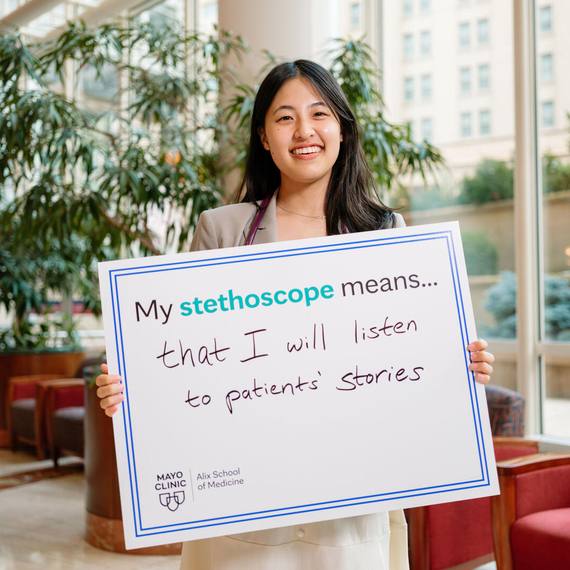PHOENIX — Researchers have found that using telemedicine to deliver stroke care, also known as telestroke, appears to be cost-effective for rural hospitals that do not have an around-the-clock neurologist, or stroke expert, on staff. The research, published today in Circulation: Cardiovascular Quality and Outcomes, is intended to help hospital administrators evaluate telestroke.
In telestroke care, the use of a telestroke robot allows a patient with stroke to be examined in real time by a neurology specialist elsewhere who consults via computer with an emergency room physician in the rural site.
"Previous studies have demonstrated that a hub-and-spoke telestroke network is cost-effective from the societal perspective — we can assess medical services, like telemedicine, in terms of the net costs to society for each year of life gained," says neurologist Bart Demaerschalk, M.D., director of Mayo Clinic Telestroke Program, and co-author of the telestroke cost effectiveness study. "However, to date the costs and benefits from the perspectives of network hospitals have not been formally estimated."
Contrary to a common perception that a telestroke referral network poses a substantial financial burden on hospitals, the study revealed that it is likely to save hospitals money and also improve patient outcomes by enabling patients to be discharged sooner.
"The health economic results from an earlier study conducted from the societal perspective convincingly demonstrated that telestroke was cost effective compared to the usual model of care," says Dr. Demaerschalk. "It's a relatively small amount of money, comparatively, telestroke costs a couple thousand dollars more to save quality years of life — so it's a bargain really."
The Circulation study estimates that compared with no network, a telestroke system of a single hub and seven spoke hospitals may result in the use of more clot-busting drugs, procedures and other stroke therapies, more stroke patients discharged home independently, and despite upfront and maintenance expenses, a greater total cost savings for the entire network of hospitals.
Using data from Mayo Clinic and the Georgia Health Sciences University telestroke networks, the research model estimated that every year, compared to no telemedicine network, 45 more patients would be treated with intravenous thrombolysis and 20 more with endovascular stroke therapies — leading to 6.11 more independent patients discharged home. This represents more than $100,000 in cost savings for each of the participating rural hospitals each year, according to the study.
"If the costs associated with the technology are reduced or if reimbursement opportunities increase we will recognize that this treatment method may, in fact, save even more money," Dr. Demaerschalk says. "The upfront costs associated with setting up the telestroke technology and managing the network organization are quickly offset by the financial gains that result from a higher proportion of patients receiving clot busting drugs and the reduced stroke-related disability and subsequent reduced need for rehabilitation, nursing home care and assistance at home."
The results of this economic research have implications on the assignment of financial responsibility between hub and spoke hospital partners. For instance, in a network that is principally designed to aid spoke hospitals' capacity to effectively assess, treat, and admit more patients with stroke, it is the spoke hospitals which benefit economically — and it then makes sense that the spoke hospitals should contribute to financing the telestroke network system.
The study was conducted by researchers at Mayo Clinic, Georgia Health Sciences University, Analysis Group, and was funded by Genentech, Inc.
Mayo Clinic first used telemedicine technology with the stroke telemedicine program in 2007, when statistics revealed that 40 percent of residents in Arizona lacked local stroke experts.
Mayo Clinic was the first medical center in Arizona to do pioneering clinical research to study telemedicine as a means of serving patients with stroke in non-urban settings, and today serves as the "hub" in a network of 12 "spoke" centers. Since the telestroke program began more than 1,500 emergency consultations for stroke between Mayo stroke neurologists and physicians at the spoke centers in Arizona have taken place. Beyond Arizona, Mayo Clinic Telestroke is represented nationally, with hub and spoke networks already in existence in Florida and in a development phase in Minnesota and Mayo Clinic Health System.
Disclosures: Authors Drs. Jeffery Switzer and Demaerschalk are consultants for Genentech, Inc. Authors L. Fan and Drs. J. Xie and E. Wu are employees of the Analysis Group, which received funding from Genentech, Inc. Author K.F. Villa is an employee of Genentech, Inc.
Journalists can become a member of the Mayo Clinic News Network for the latest health, science and research news and access to video, audio, text and graphic elements that can be downloaded or embedded.
Media Contact: Jim McVeigh, Public Affairs, 480-301-4222








